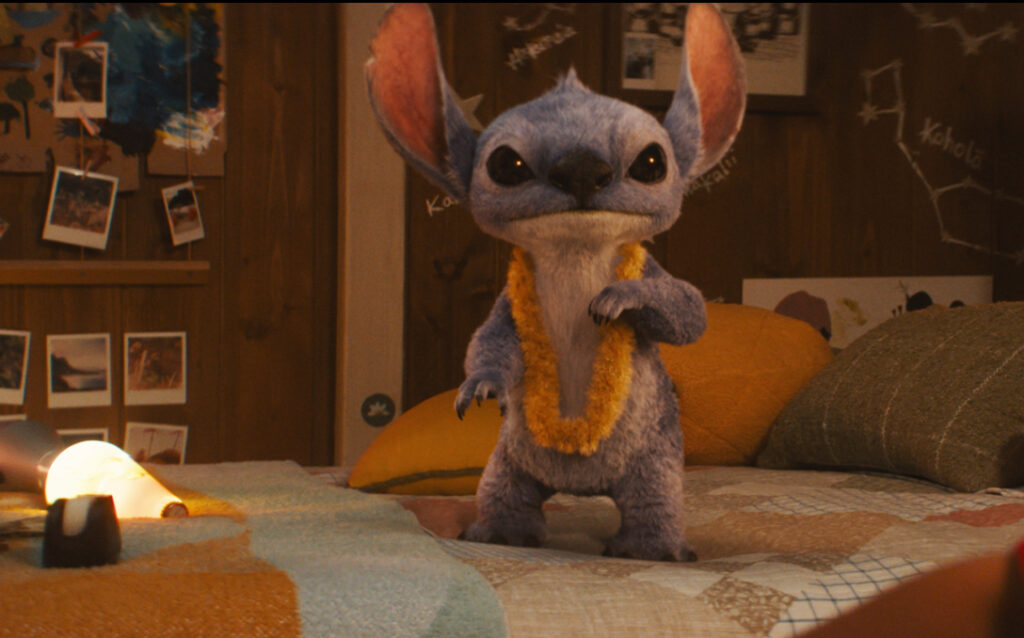The Lilo & Stitch live-action remake has landed in theaters with the kind of momentum most studios only dream of. For Disney, it’s a calculated storm of nostalgia, timing, and market mastery. Directed by Dean Fleischer Camp (Marcel the Shell with Shoes On) and co-written by Chris Kekaniokalani Bright and Mike Van Waes, this new iteration of the 2002 animated cult classic isn’t just a film—it’s a milestone in franchise strategy. A $2.6 billion milestone, to be exact.
Once considered a strange, scrappy outlier in the Disney canon—more punk than princess—Lilo & Stitch has since evolved into a merchandising empire that rivals Frozen, Toy Story, and Star Wars. Stitch is everywhere: plush toys, t-shirts, cereal boxes, dog collars, Crocs, AirPods cases, even yogurt. He’s no longer just a character—he’s an aesthetic, a meme, a cross-generational icon. In 2019, Stitch-related merchandise brought in $200 million. By 2024, that figure had exploded to $2.6 billion.
Why?
The answer lies in Stitch’s rare blend of rebellion and relatability. He’s chaos in a hoodie. A misfit with churn. He resonates with kids, teens, parents, and even millennials who remember watching the original film in theaters or on DVD. He’s also a dream for marketers—his expressive face, small form factor, and blue-furred cuteness fit neatly on just about anything. Where Mickey represents tradition, Stitch represents freedom. He’s a wildcard you can buy.
So when Disney announced a live-action remake, it wasn’t just about cinematic storytelling. It was brand expansion in action. It was the mouse house flexing its ability to turn legacy into currency, again.
The 2025 Remake: What’s New, What’s Classic
Disney didn’t just slap CGI over a 2002 template. The 2025 Lilo & Stitch remake is nuanced, richly localized, and surprisingly grounded. Directed with sensitivity by Dean Fleischer Camp, who’s known for giving depth to small, oddball characters, the film retains the emotional core of the original: a story about found family, grief, and the messy, beautiful bond between a lonely girl and an alien fugitive.
Maia Kealoha, in her film debut, delivers a sincere, magnetic performance as Lilo Pelekai. She’s not playing a caricature or a nostalgia puppet—she’s real, and you feel it. This version of Lilo is more introspective than the original but no less fiery. Kealoha’s presence alone re-centers the film around authenticity and local identity. Hawaii isn’t just a backdrop here; it breathes through every frame.
Stitch, still voiced by original creator Chris Sanders, hasn’t lost his edge. The CGI is expressive without feeling overpolished. Stitch looks like he belongs in this world—chaotic, uncanny, and oddly lovable. Sanders doesn’t just reprise the voice; he reanimates the soul of the character he birthed over two decades ago. It works.
The rest of the cast is equally strong. Sydney Elizebeth Agudong plays Nani with a mix of exhaustion and love that nails the emotional stakes. Hannah Waddingham adds gravity as the new Child Services worker, while Billy Magnussen and Zach Galifianakis inject humor without derailing the plot. Notably, the inclusion of original cast members Tia Carrere, Amy Hill, and Jason Scott Lee offers a respectful bridge between past and present.
The screenplay blends original beats with reimagined scenes that expand on the Pelekai sisters’ relationship and the cultural landscape of modern-day Hawaii. Rather than rely solely on slapstick alien antics, the film leans into quieter moments, allowing grief, community, and identity to unfold organically.
A Family Film That Doesn’t Flinch
One of the most refreshing aspects of this remake is its refusal to sand down its themes for younger audiences. Just like the original, this Lilo & Stitch confronts loss, abandonment, social stigma, and the impossible pressure placed on working-class families.
Nani’s struggle to keep custody of Lilo isn’t played for melodrama—it’s rendered with a sincerity that’s rare in big-budget family films. There’s no villain here, only a flawed system and flawed people trying to do right. That realism grounds the film’s sci-fi premise, making Stitch’s emotional evolution feel earned rather than engineered.
Even the aliens—Jumba, Pleakley, and the Galactic Federation—are portrayed with more narrative discipline. The comedy is intact, but it doesn’t undercut the stakes. Stitch’s transformation from destructive “Experiment 626” to loving family member isn’t glossed over—it’s shown step by step, heartbreak to breakthrough.
The Stitch Economy
But let’s not pretend this is just art. This movie is also a merchandising volcano. Disney isn’t rebooting Lilo & Stitch purely to relive its early-2000s success. The numbers tell the real story.
Stitch merchandise outsold every other Disney character last year—yes, including Elsa. With Gen Z and Gen Alpha obsessed with “weird-cute” mascots (see: Sanrio’s Kuromi, or the TikTokification of My Melody), Stitch fits the vibe like a glove. He’s feral. He’s emotional. He breaks stuff. He apologizes. He eats cake.
By launching the remake in 2025, Disney positions Stitch not only for a box office win, but for long-term retail saturation. New plushies, apparel drops, influencer collabs, AI filters, interactive apps—this isn’t speculation. It’s the Stitch industrial complex in full swing.
And it works because Lilo & Stitch was always more than a movie. It was one of Disney’s first truly postmodern narratives: no royalty, no castles, no European fairytales. Instead, it offered cultural specificity (Hawaiian), working-class protagonists, and real emotional trauma. All wrapped in sci-fi chaos and surfing.
That blend—grounded pain and galactic mayhem—is what made Stitch stick.
What the Remake Gets Right
More than anything, this remake respects its source. It doesn’t treat the original like a relic. It treats it like a blueprint—and builds on it.
Rather than update for the sake of trendiness, the new film deepens its roots. It consults cultural advisors, casts Native Hawaiian actors in major roles, and lets silence linger where silence is needed. It’s not in a rush. That patience pays off.
And in a world where “live-action Disney remake” often means “bloated, soulless, uncanny cash grab,” Lilo & Stitch (2025) is a sharp rebuke. It’s not trying to outdo the original—it’s trying to echo it, reverently. The result is not just a movie. It’s a tribute. A torch pass. A new story that doesn’t overwrite the old one, but honors it.
What It Signals for Disney
Disney has had a turbulent few years—underwhelming Star Wars spin-offs, a Marvel fatigue problem, and streaming uncertainty. But with Lilo & Stitch, the studio reminds everyone of what it still does best: emotional storytelling through character-first design, wrapped in brand genius.
This film doesn’t fix all of Disney’s problems, but it does recalibrate one of its most important metrics—trust. The trust of parents, of original fans, of new audiences. You can’t fake this kind of emotional continuity. And you can’t buy it. You have to earn it.
So Stitch lands in theaters—and in lunchboxes and phone cases and college dorm walls—it’s not a marketing gimmick. It’s legacy at work.
Flow
Stitchpossible isn’t just a weekend trend. It’s a business model. It’s the result of decades of strategic branding mixed with character work that actually mattered. And unlike many remakes that feel hollow and pandering, this one has soul.
In a year that’s already overloaded with reboots and recycled IP, Lilo & Stitch (2025) emerges not just as one of the best Disney adaptations in recent memory, but one of the most necessary. It’s the rare project that justifies its existence not through profits alone, but through purpose.
Because in the end, Stitch was never just a plush toy or a memeable face. He was family. And that still means nobody gets left behind—or forgotten.
No comments yet.








